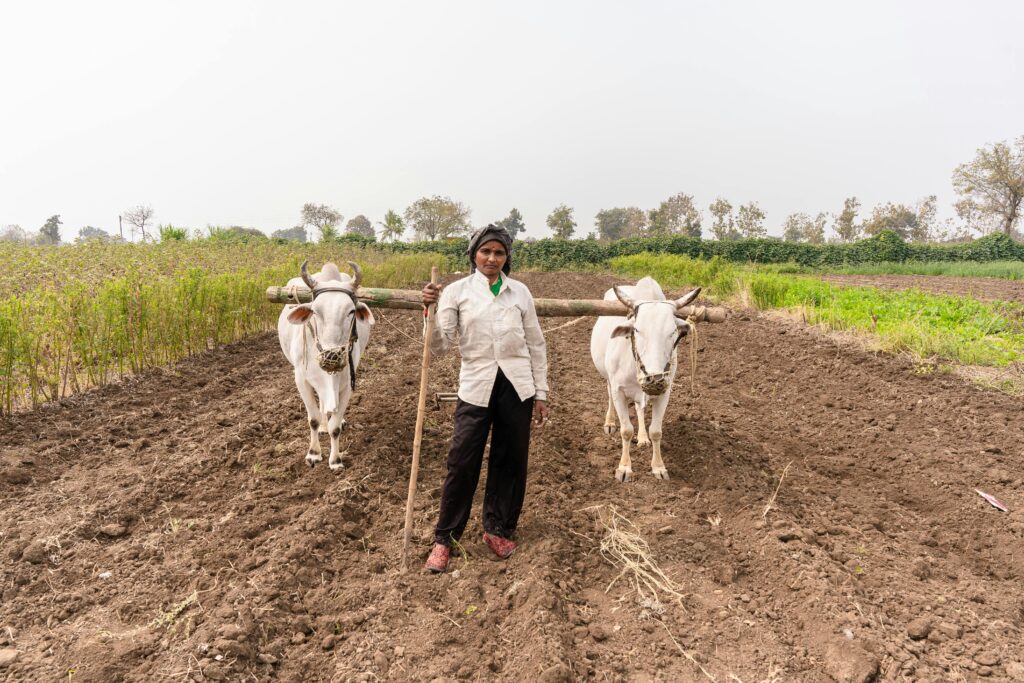On August 25, 2025, Delhi’s Jantar Mantar once again became a focal point for farmers’ voices as thousands gathered for the Kisan Mahapanchayat. Organized by the Samyukt Kisan Morcha (SKM), the assembly called for a legal guarantee of the Minimum Support Price (MSP) and other long‑pending assurances. The event featured passionate speeches, peaceful demonstrations, and a reminder of the resilience shown during the historic 2020–21 farmers’ protests.
This article explains the ongoing Kisan Mahapanchayat in Delhi, the issues at stake, and what may come next.
Why Farmers Gathered at Jantar Mantar
Farmer leaders emphasized that, despite agriculture’s central role in India’s economy, many farmers face unstable incomes and significant risks. Fluctuating crop prices, rising input costs, erratic weather, and limited support mechanisms have left small and marginal farmers under persistent pressure. Farming is already demanding work; these added uncertainties increase financial and mental strain.
Primary Demands at the 2025 Kisan Mahapanchayat
- Legal guarantee for MSP on all crops so farmers receive fair prices regardless of market volatility, helping stabilize farm incomes.
- Withdrawal of pending police cases from the 2020–21 protests to provide closure and peace of mind.
- Exclusion of agriculture, dairy, poultry, and fisheries from any upcoming trade agreement with the United States.
- Stronger government action on crop insurance, loan waivers, and climate compensation for those affected by floods, droughts, or extreme weather.
The Scene at Jantar Mantar
The gathering was peaceful and disciplined. Farmers arrived in groups carrying banners and placards with messages such as “MSP is our right” and “Save farmers, save the nation.” To maintain law and order, approximately 1,200 Delhi Police personnel were deployed around the site, with barricades at multiple entry points and traffic diversions in place.
Despite restrictions, the atmosphere remained calm and focused. Farmer leaders addressed the crowd, urging timely government action to prevent further rural distress. Many participants underscored their commitment to nonviolence, invoking Gandhian principles to convey their message without confrontation.
Voices of the Farmers
A recurring theme was frustration over promises that remain unfulfilled.
“We called off our protests in 2021 when the government promised to look into MSP and other demands. Four years later, we are still waiting. How long can a farmer survive without fair prices?” said one farmer leader.
Women farmers, dairy farmers, and agricultural laborers were also present, highlighting that the struggle extends beyond crop cultivation and touches the entire rural economy. Leaders stressed that the Mahapanchayat was not politically driven; it was framed as a fight for livelihoods, dignity, and long‑term stability.
Political Reactions
The Mahapanchayat drew swift political responses. Several opposition parties expressed support, criticizing the central government for not fully delivering on commitments and sending representatives to the site. Government officials stated that dialogues are ongoing and reforms are being considered to strengthen the agricultural sector. Farmer unions, however, remain cautious, citing delays and previously unfulfilled assurances.
Historical Context: Echoes of the 2020–21 Protests
This gathering is rooted in the broader context of the 2020–21 farmers’ movement, when thousands camped at Delhi’s borders for over a year, culminating in the repeal of three farm laws. While that repeal was seen as a significant outcome, farmers argue that core issues—MSP, loan waivers, and crop insurance—are still unresolved. The Mahapanchayat signals that rural concerns remain pressing and require durable solutions.
Why the MSP Demand Matters
MSP has been central to the debate for years. Farmers are seeking legal status for MSP to ensure no crop is bought below a government‑fixed rate. Although MSP exists for certain crops, procurement is uneven across states. Procurement agencies purchase wheat and paddy widely in Punjab and Haryana, but many farmers elsewhere struggle to sell at MSP rates.
Without a legal guarantee, farmers can be vulnerable to middlemen and abrupt market swings. The call for MSP is tied not only to income protection but also to broader food security and rural stability.
Peaceful Protest, Clear Message
A defining feature of the Mahapanchayat was its orderly and nonviolent conduct. Following SKM’s guidance to maintain discipline, the event concluded without major disruptions. The collective resolve at Jantar Mantar reinforced the farmers’ message and reminded the public of their role as the nation’s “annadatas” (food providers).
What Lies Ahead
Farmer unions have indicated they may intensify the agitation if their demands are not addressed, considering larger gatherings, marches, and potential nationwide actions. Observers also expect efforts to reopen talks with farmer leaders to prevent escalation. The Mahapanchayat has reignited attention on agricultural reforms, and its implications are likely to shape the coming months.
Conclusion
The Kisan Mahapanchayat at Jantar Mantar on August 25, 2025, was more than a gathering; it was a statement of unity and resolve. As the debate around MSP, loan waivers, and broader agricultural reforms continues, one point stands out: farmers seek tangible action over promises. The peaceful yet forceful demonstration in Delhi underscores that the backbone of India’s economy—the farming community—expects meaningful steps that secure their future. Many hope this renewed engagement will translate into outcomes that address long‑standing concerns.
My Opinion
Kisan Mahapanchayat (MSP) I believe predictable, remunerative pricing is essential for small and marginal farmers, but any legal MSP framework should be designed carefully to avoid market distortions and undue fiscal strain. A practical path could pair time‑bound talks on MSP coverage with stronger procurement transparency, wider crop‑insurance access, and climate‑risk support. The disciplined, nonviolent protest strengthens its moral weight; in turn, the government should respond with clear timelines and measurable deliverables. I hope both sides prioritize steady incomes and long‑term resilience over headline fixes.




